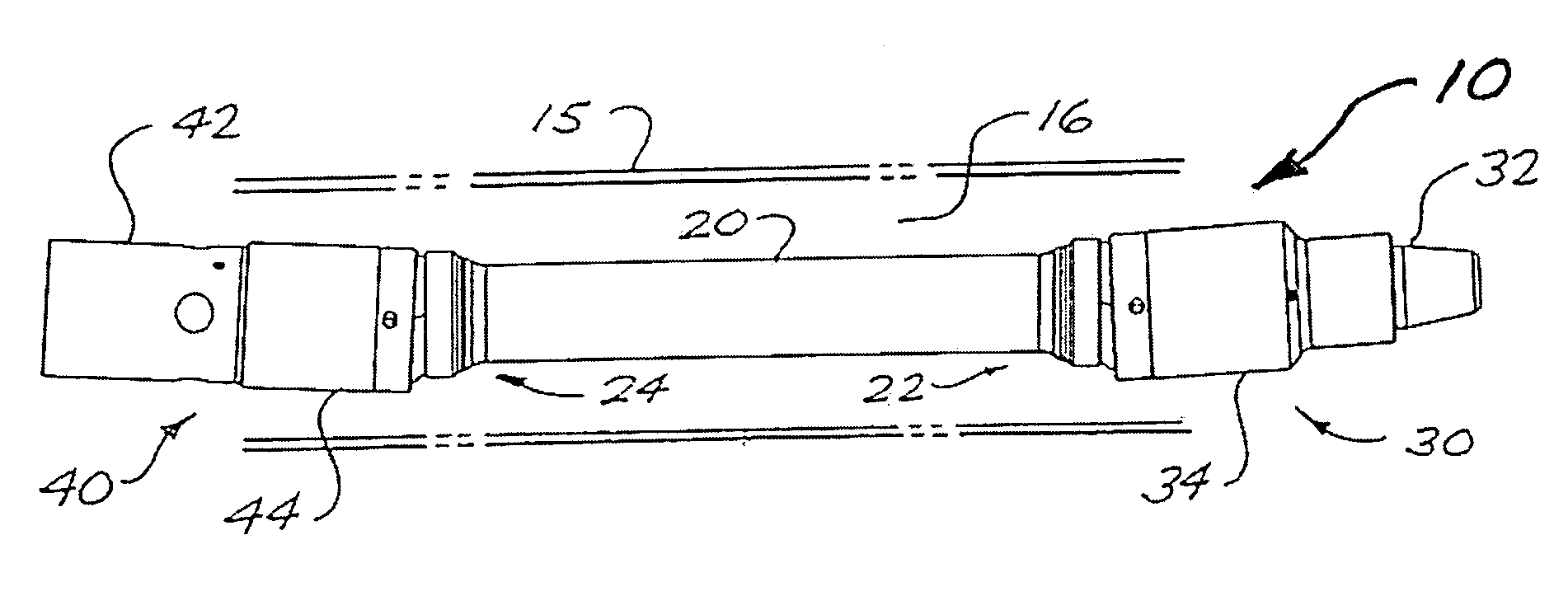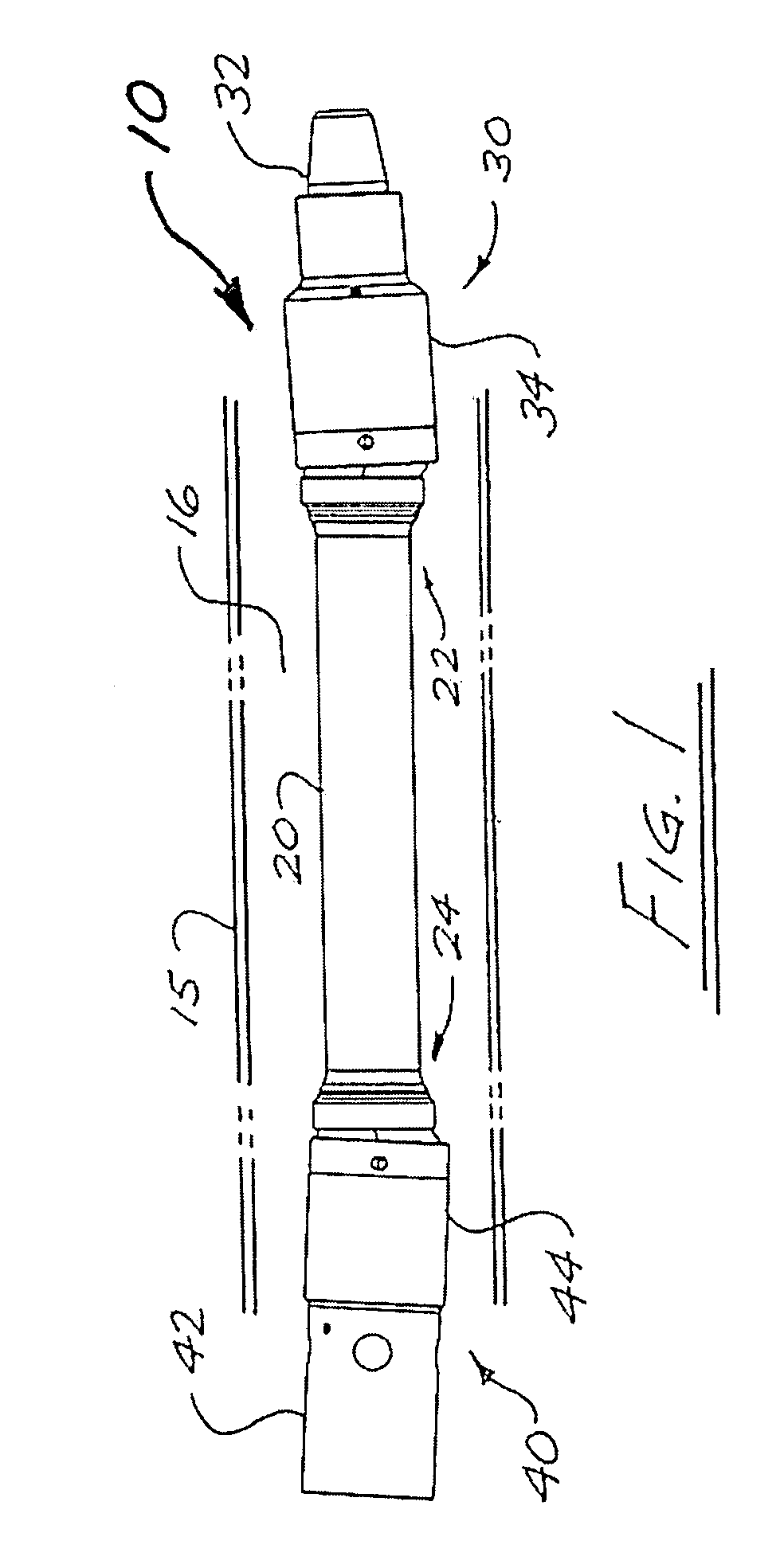Drive shaft assembly for a downhole motor
a technology of drive shaft and downhole motor, which is applied in the field of universal joints, can solve the problems of shortening affecting the service life of the universal joint, and unable to meet the requirements of torque transfer,
- Summary
- Abstract
- Description
- Claims
- Application Information
AI Technical Summary
Benefits of technology
Problems solved by technology
Method used
Image
Examples
Embodiment Construction
[0074]Referring to FIG. 1, a drive shaft assembly 10 in accordance with the present invention comprises a drive shaft 20 having an upper end 22 and a lower end 24, an upper end housing 30, and a lower end housing 40. When assembled within a downhole motor, drive shaft assembly 10 will be enclosed within a tubular drive shaft housing conceptually indicated by broken lines 15 in FIG. 1, thereby forming an annular space 16 between drive shaft housing 15 and drive shaft assembly 10.
[0075]Upper end housing 30 has a connector section 32, adapted for connection to the output shaft (not shown) of the power section of a downhole motor, and a coaxially contiguous socket section 34, adapted to receive upper end 22 of drive shaft 20 and to accommodate omni-directional rotation of drive shaft 20 therein, while transferring rotational torque and axial thrust loads from the output shaft to drive shaft 20. Lower end housing 40 has a connector section 42, adapted for connection to the mandrel of the...
PUM
| Property | Measurement | Unit |
|---|---|---|
| torque | aaaaa | aaaaa |
| radius | aaaaa | aaaaa |
| length | aaaaa | aaaaa |
Abstract
Description
Claims
Application Information
 Login to View More
Login to View More - R&D
- Intellectual Property
- Life Sciences
- Materials
- Tech Scout
- Unparalleled Data Quality
- Higher Quality Content
- 60% Fewer Hallucinations
Browse by: Latest US Patents, China's latest patents, Technical Efficacy Thesaurus, Application Domain, Technology Topic, Popular Technical Reports.
© 2025 PatSnap. All rights reserved.Legal|Privacy policy|Modern Slavery Act Transparency Statement|Sitemap|About US| Contact US: help@patsnap.com



